Pending Nominations
Pending Nominations
Pursuant to Section 4855(a) of the California Code of Regulations California Register of Historical Resources (Title 14, Chapter 11.5), the following nominations are scheduled for the August 8, 2025 State Historical Resources Commission (SHRC) quarterly meeting, taking place at 9:00 AM at Secretary of State Building Auditorium, 1500 11th Street, Sacramento, CA 95814. This meeting will also be held online via Zoom, and broadcast via Cal-Span. Dial-in access will also be available. Meeting notices and agendas will be posted ten days prior to the meeting date, and a Zoom link will be posted on approximately the same date to register for this meeting. Use the Zoom link to register only if you wish to provide testimony remotely at the meeting. If you plan to attend the meeting in person, you do not need to register.
Watch the meeting on CAL-SPAN if you wish to view the meeting but do not wish to provide public testimony.
Register via Zoom to remotely attend the August 8, 2025 SHRC Meeting only if you wish to provide public testimony remotely at the meeting. Do not register for the Zoom meeting if you plan on attending the meeting in person.
The SHRC invites comments on the nominations from the public either in writing or at the scheduled public meeting. Copies of nominations are posted as PDF documents below. Written comments can be sent to State Historical Resources Commission, P.O. Box 942896, Sacramento, CA 94296-0001, or via email to calshpo.shrc@parks.ca.gov. Please include nomination name and hearing date in the email's subject line.
The order of comments for nominations under consideration during the Discussion and Action portion on the agenda will proceed as follows: The Commission will first hear from the nominator or his/her/their designee. The nominator or his/her/their designee will have ten (10) minutes to speak. The Commission will then hear from the property owner(s) or his/her/their designee. Each property owner or his/her/their designee of an individually nominated property will have ten (10) minutes to speak. Each property owner or his/her/their designee whose property is within the boundaries of a nominated district will have five (5) minutes to speak. Individuals representing local, state, federal, and tribal governments, will each have five (5) minutes to speak. Any member of the general public will have three (3) minutes to speak. Those members of the public who require a translator will be allocated twice the time otherwise defined. Within this stated order of commenters, those in the room will be heard from first and then those participating via Zoom or telephone.
Those providing comments about nominations that are on Consent Calendar, or comments related to other matters not on the agenda, will each have three (3) minutes to speak.
Presentations regarding agenda items shall be submitted to OHP staff at least seven (7) days prior to the meeting, and shall not go beyond the allowable time frame for the applicable comment period. Presentations, along with any other public comment to be presented to the SHRC for the August 8, 2025 meeting, must be received by 9:00 AM on Friday, August 1, 2025. Submit comments to CalSHPO.shrc@parks.ca.gov.
PLEASE NOTE
Complete and official listing of nominated properties scheduled for hearing at the above mentioned SHRC Meeting can be found on the meeting agenda via the SHRC Meeting Schedule and Notices page. The nominations on this page may not reflect the most current properties listed on the agenda.
Properties can be removed from the agenda by the State Historic Preservation Officer or the State Historical Resources Commission. No properties can be added to the agenda.
National Register of Historic Places nominations are considered drafts until listed by the Keeper.
California Register of Historical Resources nominations are considered drafts until listed or formally determined eligible for listing by the State Historical Resources Commission.
Calfornia Historical Landmarks and Points of Historical Interest are considered drafts until approved for listing by the State Historical Resources Commission and the Director of California State Parks.
Properties nominated to the National Register of Historic Places
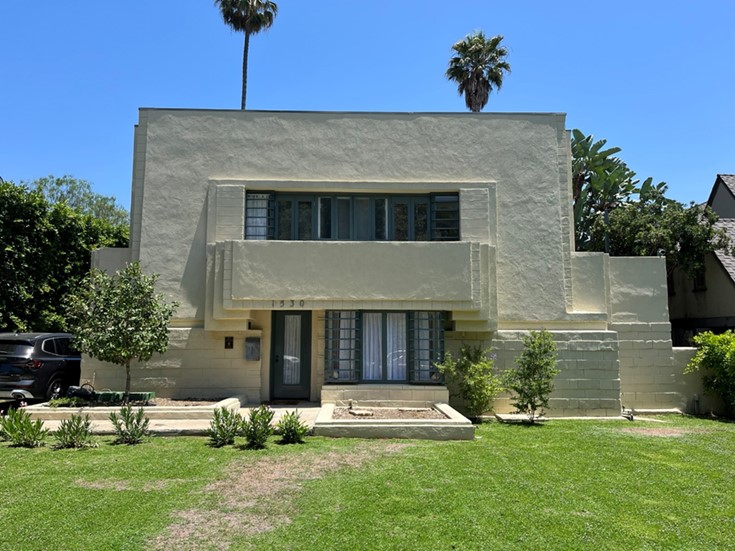 Bollman, Henry O., House is a two-story Mayan Revival style residence constructed in 1923. The fourth house designed by architect Lloyd Wright, the Henry O. Bollman House was one of the first, if not the first, building to utilize the knit-block system he developed, which incorporates steel bars to tie together concrete blocks. Lloyd Wright later collaborated with his father, Frank Lloyd Wright, to further develop this system, which both architects used in later designs.
Bollman, Henry O., House is a two-story Mayan Revival style residence constructed in 1923. The fourth house designed by architect Lloyd Wright, the Henry O. Bollman House was one of the first, if not the first, building to utilize the knit-block system he developed, which incorporates steel bars to tie together concrete blocks. Lloyd Wright later collaborated with his father, Frank Lloyd Wright, to further develop this system, which both architects used in later designs.
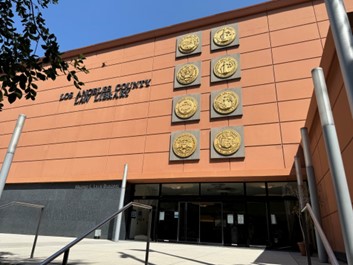 Los Angeles County Law Library is part of a grouping of government buildings organized along a mall that comprise the Los Angeles Civic Center. The Late Moderne style building includes an original portion on the south completed in 1953 and an addition on the north completed in 1971. Founded in 1891, the library is the largest county law library in California. Its foreign and international law collection including rare books, manuscripts, and historical documents sets it apart from other public law libraries in the state. The building is significant as an important work of the architectural firm of Austin, Field & Frye, a firm recognized as a master of modern architecture particularly with regard to Los Angeles government buildings.
Los Angeles County Law Library is part of a grouping of government buildings organized along a mall that comprise the Los Angeles Civic Center. The Late Moderne style building includes an original portion on the south completed in 1953 and an addition on the north completed in 1971. Founded in 1891, the library is the largest county law library in California. Its foreign and international law collection including rare books, manuscripts, and historical documents sets it apart from other public law libraries in the state. The building is significant as an important work of the architectural firm of Austin, Field & Frye, a firm recognized as a master of modern architecture particularly with regard to Los Angeles government buildings.
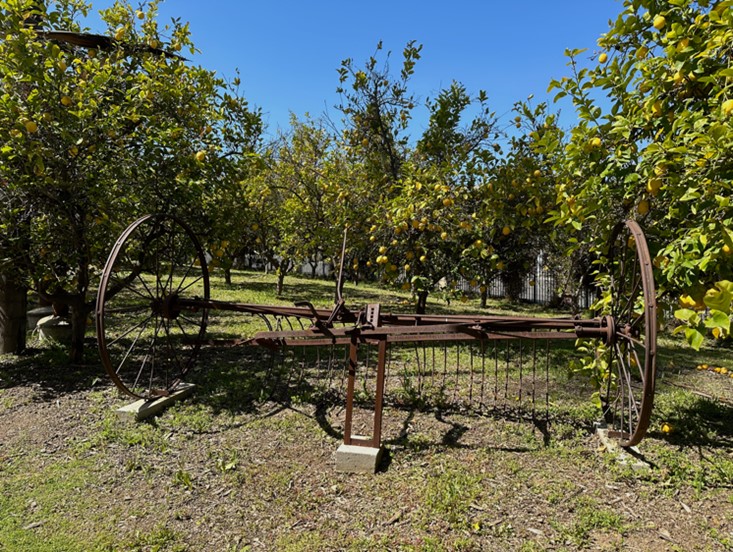 Corona Foothill Ranch is a 4.5-acre remnant of a ranch that originally encompassed 900 acres and later expanded to approximately 2,530 acres. California Ranch Style residential buildings, as well as industrial, utilitarian, and agricultural buildings and structures, were constructed between 1904 and 1966. The property is significant for its association with the early citrus agriculture industry in Riverside County, Corona Foothill Lemon Company founder Samuel Betts Hampton and board member Asa Frank Call, and the company’s impact on the region’s development during the early twentieth century.
Corona Foothill Ranch is a 4.5-acre remnant of a ranch that originally encompassed 900 acres and later expanded to approximately 2,530 acres. California Ranch Style residential buildings, as well as industrial, utilitarian, and agricultural buildings and structures, were constructed between 1904 and 1966. The property is significant for its association with the early citrus agriculture industry in Riverside County, Corona Foothill Lemon Company founder Samuel Betts Hampton and board member Asa Frank Call, and the company’s impact on the region’s development during the early twentieth century.
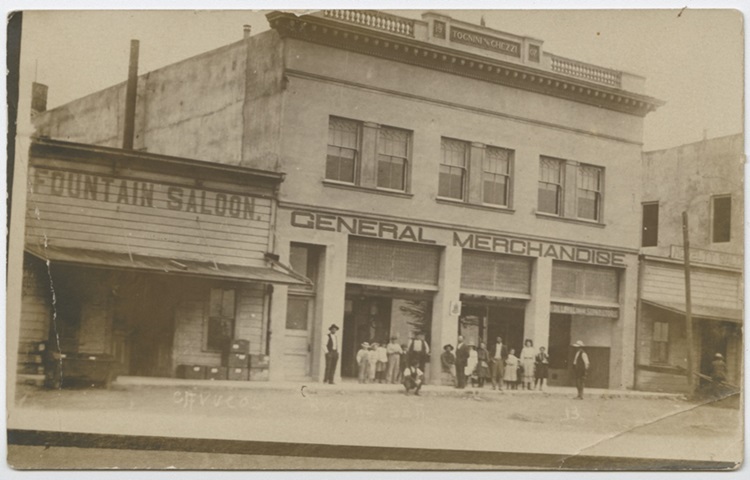 Tognini and Ghezzi Building, a mercantile and general store established by Achille B. Tognini and Carlo Ghezzi, played an important role in the commercial history of Cayucos as the town developed into an important trading center on California’s central coast. Surrounded by other commercial and retail businesses in the heart of Cayucos’ downtown, the well-preserved reinforced concrete early twentieth century Commercial Style building retains its character defining features, including large transoms, recessed storefront entryway, and large interior volume with original mezzanine.
Tognini and Ghezzi Building, a mercantile and general store established by Achille B. Tognini and Carlo Ghezzi, played an important role in the commercial history of Cayucos as the town developed into an important trading center on California’s central coast. Surrounded by other commercial and retail businesses in the heart of Cayucos’ downtown, the well-preserved reinforced concrete early twentieth century Commercial Style building retains its character defining features, including large transoms, recessed storefront entryway, and large interior volume with original mezzanine.
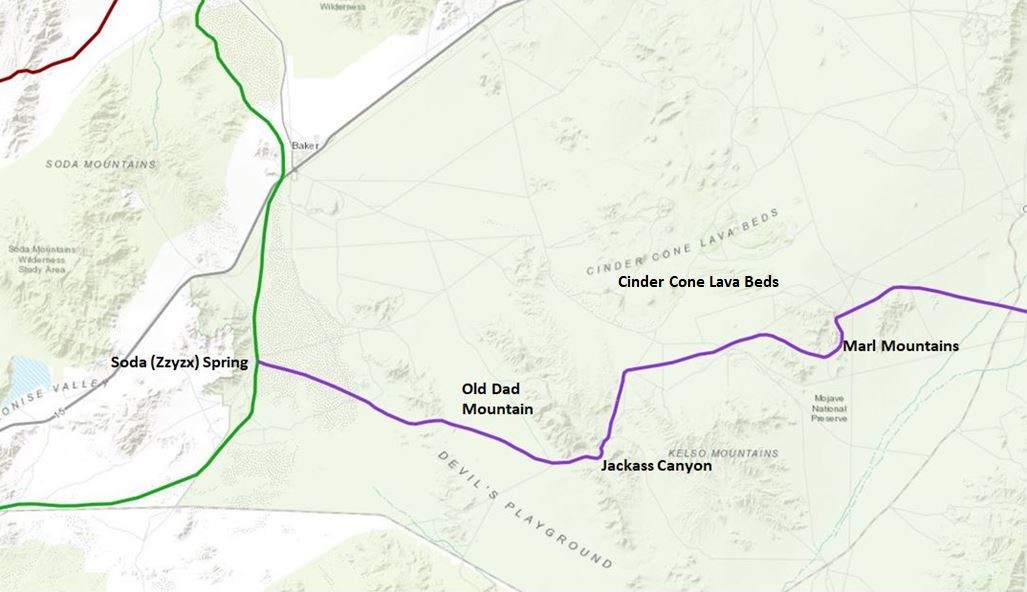 Old Spanish Trail is a diverse trail system with multiple variants on routes that pass through six western states: New Mexico, Colorado, Utah, Arizona, Nevada, and California. Spearheaded by the Colorado State Historic Preservation Office with review and comment from the other states, the Multiple Property Documentation Form includes four historic contexts: International and National Commerce 1821-1855, Regional Settlement 1831-1881, Government Exploration 1844-1859, and Military Use 1846-1881.
Old Spanish Trail is a diverse trail system with multiple variants on routes that pass through six western states: New Mexico, Colorado, Utah, Arizona, Nevada, and California. Spearheaded by the Colorado State Historic Preservation Office with review and comment from the other states, the Multiple Property Documentation Form includes four historic contexts: International and National Commerce 1821-1855, Regional Settlement 1831-1881, Government Exploration 1844-1859, and Military Use 1846-1881.
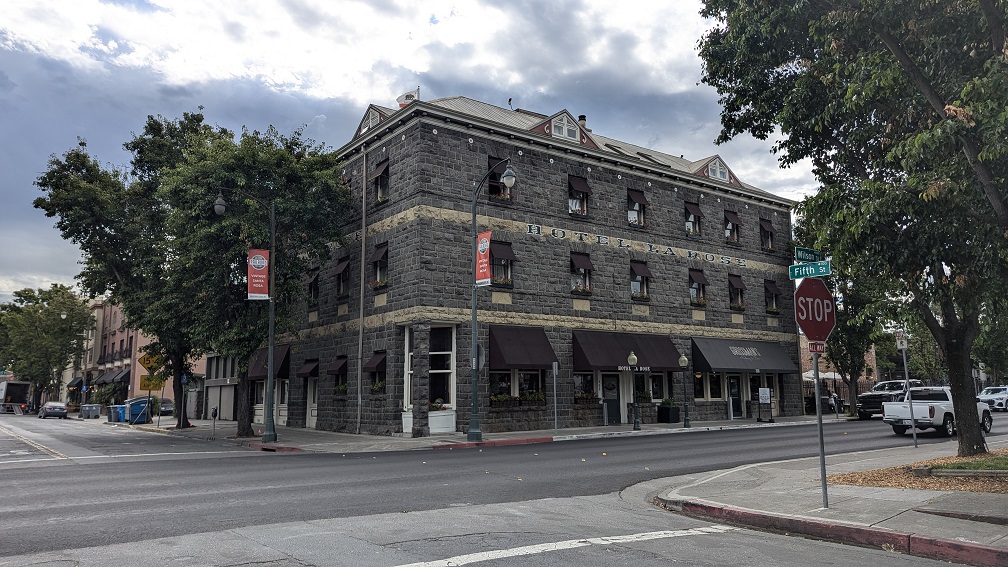 Railroad Square Historic District (Amendment), located in downtown Santa Rosa, updates the existing Railroad Square historic district to reflect changes to the district since its original listing. The district is associated with the develoment of the San Francisco & North Pacific, North Pacific Coast, and Petaluma & Santa Rosa Railroads, whose presence strongly influenced the growth of Santa Rosa.
Railroad Square Historic District (Amendment), located in downtown Santa Rosa, updates the existing Railroad Square historic district to reflect changes to the district since its original listing. The district is associated with the develoment of the San Francisco & North Pacific, North Pacific Coast, and Petaluma & Santa Rosa Railroads, whose presence strongly influenced the growth of Santa Rosa.
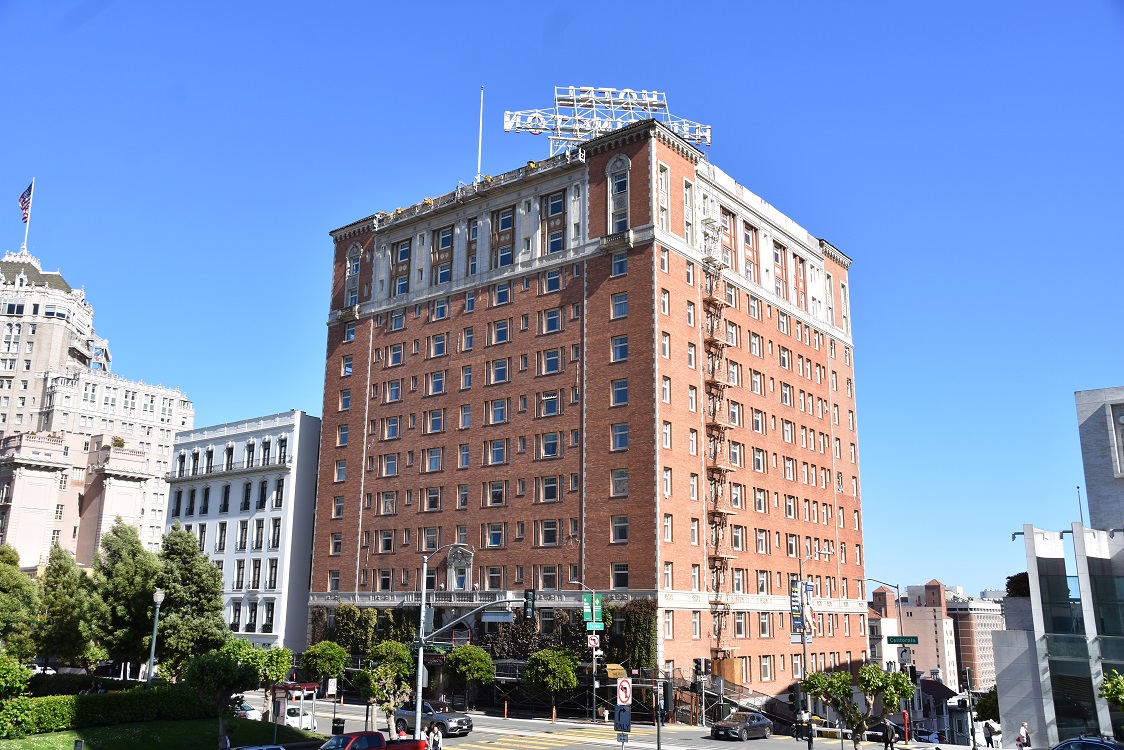 Huntington Hotel, located in San Francisco's Nob Hill neighborhood, is a 12-story Italian Renaissance Revival hotel building, constructed in 1924 and designed by the architecture firm of Weeks & Day. The hotel was originally intended as a furnished apartment hotel, as an example of the "Palace Hotel" style of residenital hotels, but its use later evolved to include rooms for travelers.
Huntington Hotel, located in San Francisco's Nob Hill neighborhood, is a 12-story Italian Renaissance Revival hotel building, constructed in 1924 and designed by the architecture firm of Weeks & Day. The hotel was originally intended as a furnished apartment hotel, as an example of the "Palace Hotel" style of residenital hotels, but its use later evolved to include rooms for travelers.
Properties nominated as California Points of Historical Interest
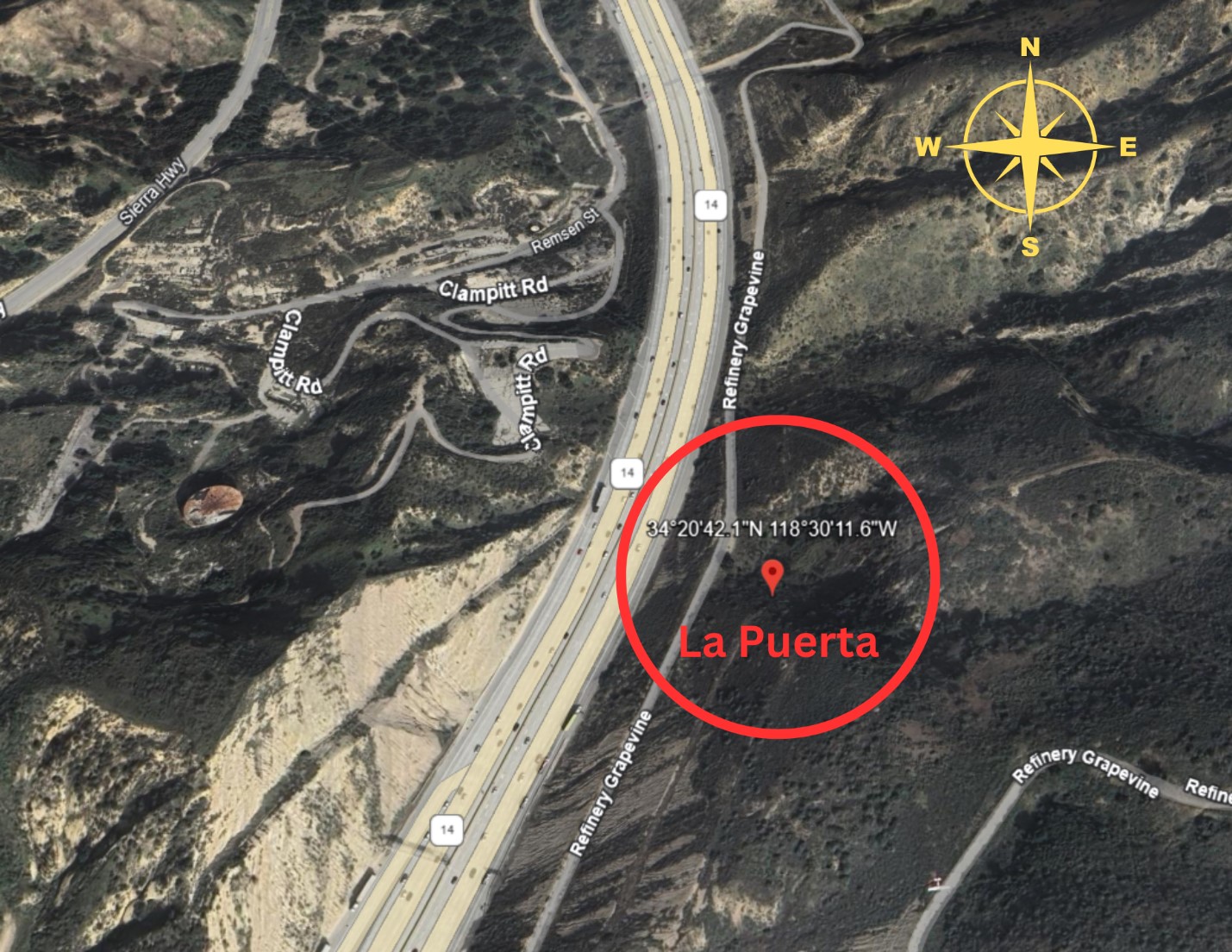 La Puerta, "The Door", or El Camino Viejo, "The Old Road", located in Santa Clarita, is a narrow pass that served as the confluence of the San Gabriel Mountains to the east, and Santa Susana Mountains to the west, through Elsemere Canyon. La Puerta functioned as a natural gateway through the rugged terrain of the region, originally serving as a footpath between indigenous villages on both sides of the San Gabriel Mountains. During the Spanish period, a bar was placed across a narrow defile along the trail to create a gate, La Puerta. In January 1847, Col. John C. Fremont led his troops through La Puerta, en route to accepting the Mexican army's surrender at the Capitulation of Cahuenga.
La Puerta, "The Door", or El Camino Viejo, "The Old Road", located in Santa Clarita, is a narrow pass that served as the confluence of the San Gabriel Mountains to the east, and Santa Susana Mountains to the west, through Elsemere Canyon. La Puerta functioned as a natural gateway through the rugged terrain of the region, originally serving as a footpath between indigenous villages on both sides of the San Gabriel Mountains. During the Spanish period, a bar was placed across a narrow defile along the trail to create a gate, La Puerta. In January 1847, Col. John C. Fremont led his troops through La Puerta, en route to accepting the Mexican army's surrender at the Capitulation of Cahuenga.
The next State Historical Resources Commission meeting is scheduled for Friday, August 8, 2025. Nominations to be heard on the August 8, 2025 agenda will be posted after May 28, 2025.
